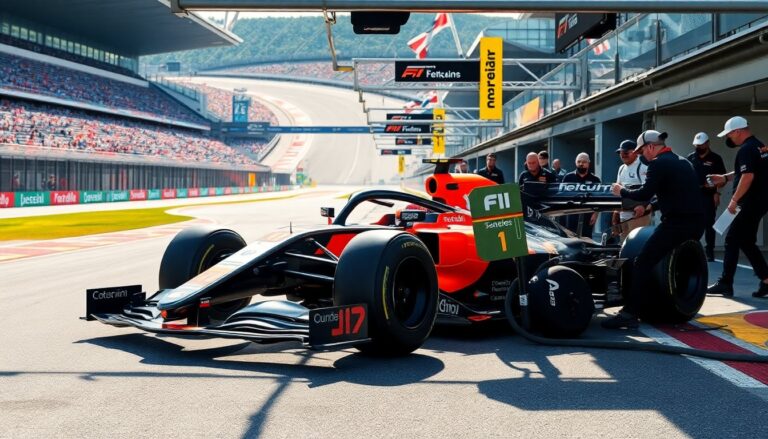Argomenti trattati
Formula 1 (F1) transcends being merely a sport; it embodies a testament to engineering prowess, speed, and an unwavering commitment to excellence. Throughout the years, F1 has experienced significant transformations, shaped by technological advancements and evolving consumer expectations. This article delves into the evolution of F1, highlighting its transition from a focus on pure speed to a commitment to sustainability and technological innovation.
The early years: speed and competition
In the formative years of Formula 1, the emphasis was firmly placed on speed and performance. The legendary Ferrari and Mercedes teams consistently showcased their prowess on the tracks, driven by powerful engines and cutting-edge aerodynamics. The sport thrived amid a landscape of minimal regulations, enabling teams to explore and expand the limits of innovation. During the mid-20th century, significant advancements, including the introduction of rear-engine cars, transformed both the design and handling of racing vehicles, setting new standards in motorsport.
Innovations in Formula 1
During the 1960s and 1970s, Formula 1 teams pushed the boundaries of automotive engineering, exploring groundbreaking design concepts. Ground effect aerodynamics and turbocharging became essential for maximizing speed and performance. This era was characterized by intense competition and significant technological advancements. A notable development was the adoption of the monocoque chassis, which enhanced safety and structural integrity. This innovation allowed cars to attain greater speeds while prioritizing driver safety.
The shift towards safety and sustainability
The evolution of motorsport has brought safety to the forefront of racing. The loss of notable drivers in tragic incidents highlighted the urgent need for enhanced safety measures. Consequently, the implementation of rigorous safety regulations became essential. Features such as crumple zones and advanced cockpit designs have been introduced to better protect drivers during high-speed competitions.
Alongside safety, a notable trend in Formula 1 is the growing emphasis on sustainability. The sport is increasingly adopting hybrid technology to minimize carbon emissions and encourage environmentally responsible practices. The integration of power units that merge traditional combustion engines with electric motors has not only redefined the racing experience but also made it more efficient and sustainable.
How technology is transforming modern F1
Modern Formula 1 cars showcase the latest advancements in technology, featuring energy recovery systems and data analytics that significantly enhance on-track performance. These innovative systems are engineered to capture energy during braking, which can then be redirected to boost acceleration. This approach not only improves speed but also promotes a more sustainable model for racing. Furthermore, teams increasingly depend on telemetry data to make immediate, informed decisions, providing them with a crucial competitive advantage in the fast-paced world of Formula 1.
Charting a sustainable path in Formula 1
As the world shifts towards sustainability, Formula 1 is taking significant steps to become a net-zero carbon sport. This commitment aims for completion by 2030 and marks a transformative change in the sport’s approach. The integration of sustainable fuels and the advancement of hybrid technologies are central to reducing the ecological impact of racing.
In addition to these efforts, F1 is investigating the potential of biofuels and other renewable energy sources. This exploration could reshape team strategies, placing equal emphasis on competitive success and environmental responsibility. Such a shift represents a notable change from previous eras, where the focus often prioritized achieving the fastest lap times at any cost.
Engaging fans in sustainability
Formula 1 is actively engaging with fans to promote sustainability. Initiatives like the F1 in Schools program aim to inspire the next generation about engineering and environmental stewardship. By involving younger audiences, the sport seeks to cultivate a community that values both speed and sustainability.
The evolution of Formula 1 mirrors broader societal changes and technological advancements. From its early days focused on speed to the modern era’s commitment to sustainability, F1 continues to adapt and innovate. As the sport looks ahead, it is set to demonstrate that high-performance racing can coexist with environmental responsibility.

